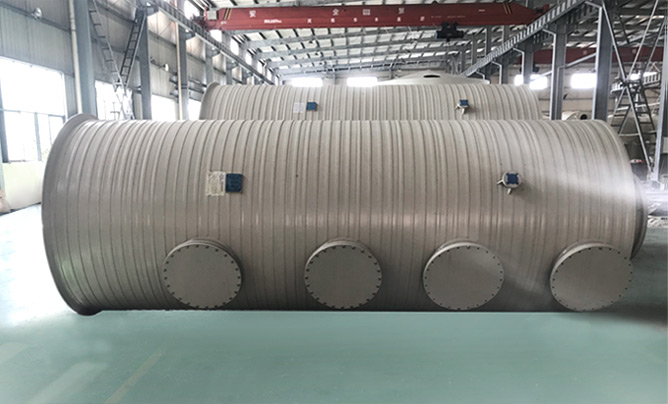Chemical storage tanks can be constructed from a variety of materials that protect against corrosion by chemicals. Some commonly used materials include:
Fiberglass Reinforced Plastic (FRP): FRP tanks are made from a mixture of fiberglass and high-quality resin. Fiberglass offers excellent corrosion resistance, and the resin increases strength and structural integrity.
Polyethylene (PE) and polypropylene (PP): These plastics are known for their corrosion resistance and are often used to make chemical storage tanks. They can withstand a wide range of chemicals and are very lightweight.
Stainless Steel Metal (SS): Stainless steel metal storage tanks are highly resistant to many corrosive chemicals. Grades consisting of 304 and 316 stainless steel are typically used due to their high corrosion resistance.
High Density Polyethylene (HDPE): HDPE tanks are resistant to a wide range of chemicals and are suitable for storing corrosive substances. They are also durable, lightweight, and affordable.
Polyvinyl Chloride (PVC): PVC tanks are ideal for storing less corrosive chemicals. They have accurate resistance to acids, alkalis and different corrosive materials. However, PVC tanks may not be suitable for highly reactive compounds.
Lined or coated carbon metal: Carbon steel tanks can be lined or coated with materials such as rubber, epoxy or polymer-based coatings to prevent corrosion. The liner acts as a barrier between the chemicals and the tank material.
It is important to select the appropriate material for the specific chemicals being stored to ensure effective corrosion resistance and prevent any potential leakage or contamination. In addition, factors such as operating temperature, pressure, chemical concentration, etc. should also be considered when selecting materials for chemical storage tanks.
